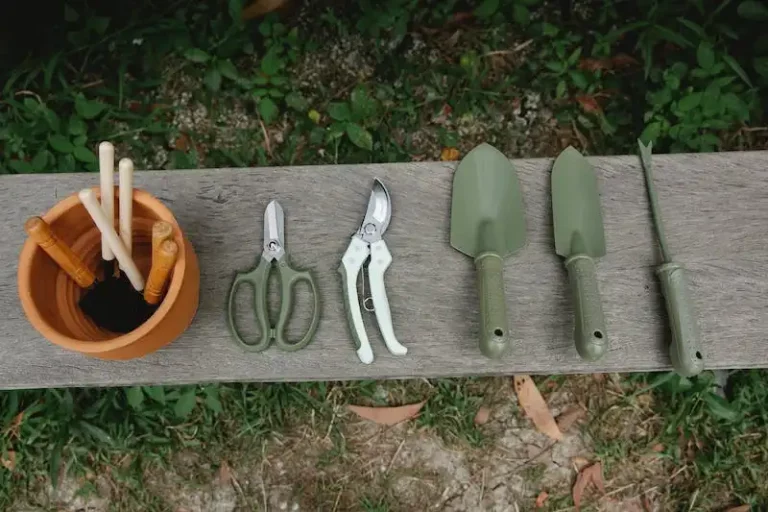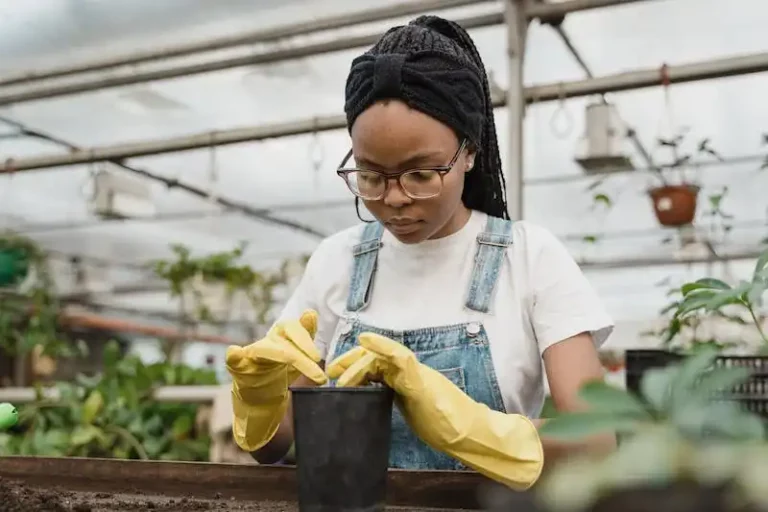When it comes to planting tender transplants, the hardening process is essential. Hardening transplants provides them with the necessary strength and resilience to thrive outdoors. This is especially important for vegetables and other plants that have been grown indoors or in a greenhouse, as they are not accustomed to the harsh conditions found outside.
Initially, when the transplants are healthy and have just sprouted, they are usually kept indoors or under lights. The controlled environment indoors ensures that the plants can grow and develop without the risk of frost or extreme temperatures. However, if the transplants are to be planted outdoors, they must be gradually acclimated to the conditions outside through the hardening process.
The hardening process involves exposing the transplants to the outdoor environment gradually, starting with shorter periods of time and sheltered locations. This means placing the transplants outside for a few hours during the day, then bringing them back inside. Over time, the duration and exposure to the outdoor elements can be increased, until the transplants are able to tolerate full sun, wind, and fluctuating temperatures without being damaged.
There are several important factors to consider when hardening transplants. First, it’s crucial to choose the right time to begin the hardening process. This is typically when the risk of frost has passed and the overnight temperatures consistently stay above freezing. Second, the transplants should be gradually exposed to brighter light and less sheltered areas, to help them adapt to the direct sunlight and wind they will experience outdoors. Third, providing support such as stakes or netting can help protect the plants from wind damage and create a stronger root system.
By following these guidelines, you can ensure that your transplants are properly hardened and ready to be planted in your garden. The hardening process may take anywhere from five days to two weeks, depending on the plants and the conditions they will face outdoors. It’s important to be patient and gradually increase the exposure, rather than rushing the process. With proper hardening, your transplants will have an excellent chance of thriving and producing a bountiful harvest in the coming season.
How to Harden Off Plants
When it comes to starting your own plants from seeds indoors, hardening them off before moving them outside is an essential process. Hardening off plants means gradually acclimating them to the outdoor environment, so they can adjust to the harsher conditions and temperatures.
As a gardener, you should begin the hardening off process in the early spring, after your seedlings have grown a few inches tall and have produced their first set of true leaves. The leaves of seedling-related plants like tomatoes or peppers, for example, are typically different from the first leaves that sprout after planting the seeds.
To start the hardening off process, select a shady spot outdoors where your plants will be protected from direct sunlight and strong winds. Leave them outside for a few hours, gradually increasing the time each day. This allows the plants to gradually adjust to the new environment without being exposed to extreme temperatures.
During the hardening off process, continue to water the plants slowly and deeply, ensuring that the soil stays moist. However, be careful not to overwater, as this can lead to root rot and other plant problems.
After a few days of hardening off, you can begin to expose your plants to a few hours of direct sunlight each day. This will help them acclimate to the sun’s rays and prepare for full sun exposure.
After a week or two of hardening off, your plants should be fully acclimated to the outdoor conditions. You can now move them to their permanent location in the garden or a larger container. Be sure to provide enough space for the plants to grow and thrive, and water them regularly.
It’s important to note that hardening off plants is an excellent way to ensure their survival and avoid shock from sudden temperature changes. If you were to plant your soft, indoor-grown plants directly into the outdoors without hardening them off, they may wilt or even die.
To summarize, here is a step-by-step guide on how to harden off your plants:
- Start the hardening off process in early spring, after your seedlings have grown a few inches tall and produced their first set of true leaves.
- Select a shady spot outdoors and gradually increase the time your plants spend outside each day.
- Water your plants slowly and deeply during the hardening off process, ensuring the soil stays moist but not overly wet.
- After a few days, begin exposing your plants to a few hours of direct sunlight each day.
- After a week or two, your plants should be fully acclimated to the outdoor conditions and can be moved to their permanent location.
By following these steps, you will ensure that your plants are healthy, strong, and ready to thrive in the outdoor environment.
What is hardening off
Hardening off is the process of gradually acclimating vegetables and other transplants before planting them in the garden. This is necessary because seedlings grown indoors have been protected from the harsh outdoor conditions and need time to adjust before being exposed to the elements. Hardening off helps the plants develop stronger stems, thicker leaves, and the ability to tolerate temperature fluctuations.
Hardening off should begin about a week or two before the last expected frost date in your zone. The process involves slowly exposing your transplants to outdoor conditions, starting with a few hours of exposure each day and gradually increasing the time outdoors. It is important to choose a shady spot for the transplants during the initial stages to prevent them from being overwhelmed by direct sunlight.
A general guide for hardening off is the “three-day rule”–during the first three days, leave the transplants outside for a few hours each day, then bring them back indoors. On the fourth day, leave them outside for a longer period of time, and on the fifth day, leave them outside overnight. If the plants show no signs of stress or wilting during this process, they are ready to be planted in the garden.
It is important to continue to acclimate the transplants to outdoor conditions even after they have been hardened off. This can be done by gradually exposing them to lower temperatures, wind, and direct sunlight. If possible, provide some protection from strong winds and extreme temperatures during the first few days in the garden to ensure the plants have a smooth transition.
The hardening off process is especially important for vegetable seedlings, as they are more susceptible to stress and temperature fluctuations. It helps them become more resilient and increases their chances of survival. By slowly transitioning your seedlings from indoor to outdoor conditions, you are giving them the best chance to thrive in the garden.
So, before planting your seedlings directly in the garden, make sure to harden them off first. This simple practice can greatly improve the success and productivity of your vegetable garden.
When to Harden Off Your Plants
Hardening off your plants is a crucial step in the process of transitioning them from a protected indoor environment to the harsher outdoor conditions. It is important to properly time when to begin this process to ensure your plants have the best chance at thriving.
If you are starting your plants from seeds, it is recommended to wait until they have at least three sets of true leaves before beginning the hardening off process. This ensures that the seedlings are mature and strong enough to tolerate being outdoors.
The timing of when to start hardening off your plants largely depends on your local climate and the specific plants you are growing. As a general rule of thumb, start the process about one to two weeks before the average date of the last frost in your zone. However, keep in mind that some plants are more cold-tolerant than others and can be hardened off earlier, while others may need to wait until after the last frost.
When you begin the hardening off process, it is important to gradually expose your plants to the outdoor conditions. Start by placing them in a shaded area outdoors for a few hours a day, gradually increasing the amount of time each day over the course of a week. This acclimates the plants to the sunlight, wind, and temperature fluctuations they will experience outdoors.
During the hardening off process, be sure to monitor your plants closely for any signs of stress. If they show signs of wilting or leaf burn, move them back indoors or provide some shade. Additionally, be mindful of any overnight temperature drops and bring your plants indoors if there is a risk of frost.
Once your plants have been successfully hardened off, they can be planted outdoors. Provide them with adequate spacing and consider using netting or other forms of protection to guard against pests and animals.
Remember, the hardening off process is not just for transplants. Even if you have purchased plants from a nursery, they may still need to be hardened off before planting. This process helps ensure that your plants have a healthy and successful growing season outdoors.
To learn more about the hardening off process and how to successfully prepare your plants for outdoor conditions, read seedling-related resources or consult with experienced gardeners. Properly hardening off your plants can make a significant difference in their ability to grow and produce well in the garden.
Hardening Transplants
Hardening transplants is the practice of gradually acclimating young plants to outdoor conditions before planting them in their final location. This process ensures that the plants will be able to tolerate the harsher environmental conditions, such as fluctuating temperatures, strong sunlight, and less frequent watering, that they will encounter in the garden.
When seedlings are initially started indoors, they are typically provided with controlled conditions, such as consistent temperatures, artificial lights, and regular watering. However, these conditions are significantly different from what they will experience outside. Therefore, it is important to harden them off to prevent their death or stunted growth.
The hardening off period should ideally start when the seedlings have developed their first true leaves. A general rule of thumb is to gradually expose the plants to outdoor conditions over a period of two to three weeks before transplanting them into the garden.
To harden off your transplants, start by placing them outdoors in a shady, protected area for a short period, like an hour or two. Then gradually increase the amount of time they spend outdoors each day, as long as the weather is favorable. This will help the plants adjust to the natural light and fluctuating temperatures. However, avoid exposing them to frost or extreme weather conditions.
After a few days of being outside during the day, you can leave them outside overnight if temperatures remain above freezing. This will help the plants become more resistant to cooler temperatures. If frost is expected, bring them back inside or provide protection with a frost cover.
When the plants have been hardened off, they are ready to be transplanted into the garden. Choose a location that receives the appropriate amount of sunlight for the specific vegetable or plant. Dig holes and space the transplants according to the recommended guidelines for their variety and the hardiness zone you are in.
Remember, the hardening off process can be time-consuming, but it is crucial for the long-term health and success of your plants. By following this practice, you can ensure that your transplants will thrive and continue to grow strong once they are in their permanent outdoor home.



